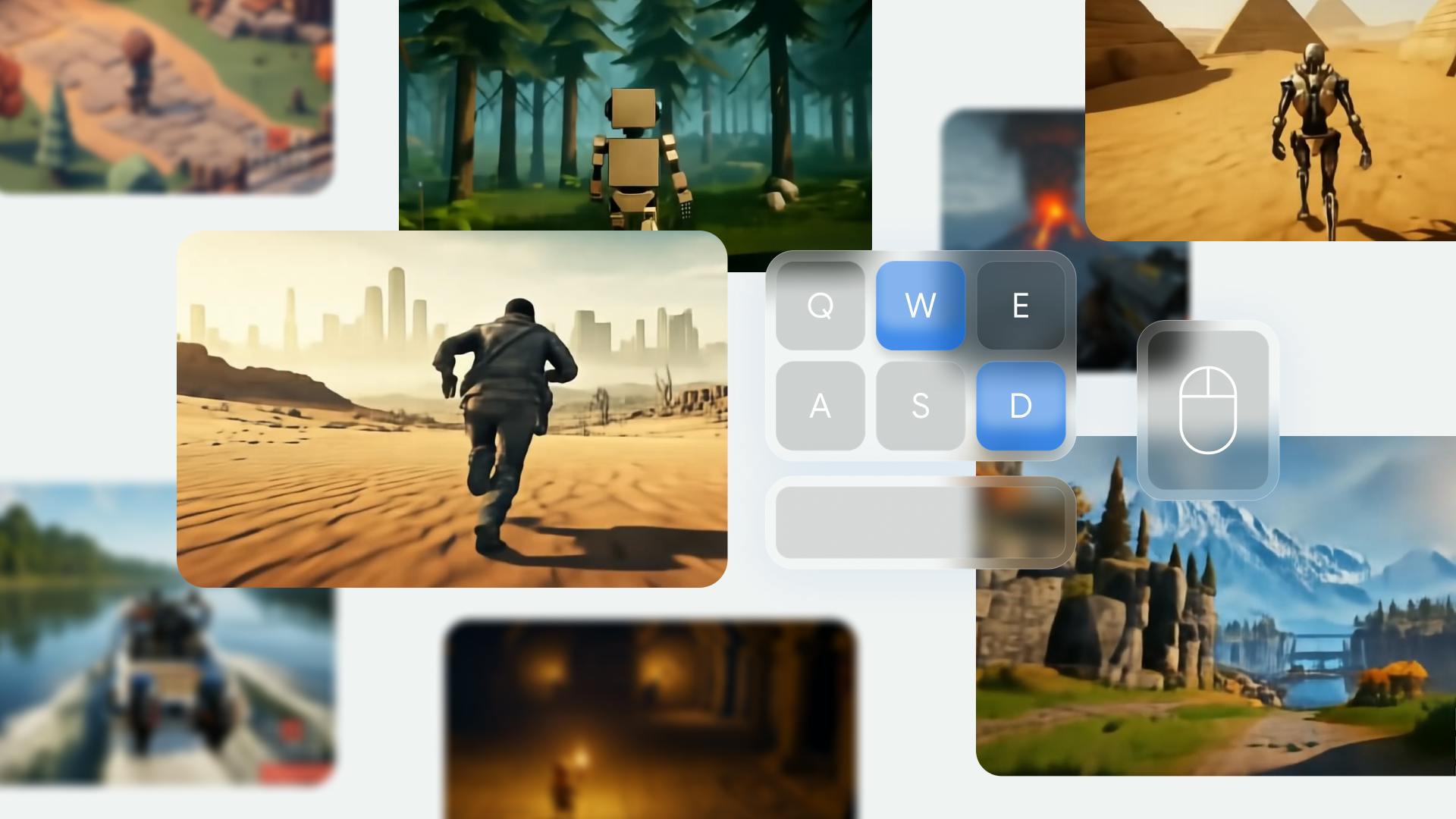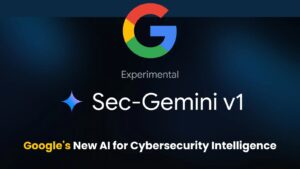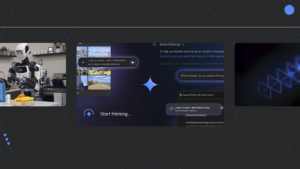Genie 2 by DeepMind: Pioneering the Future of AI-Created 3D Environments

DeepMind, a leading AI research division of Google, has unveiled Genie 2, an advanced AI model that can create limitless interactive 3D environments using just a single image or text prompt. As an upgraded version of its predecessor, Genie 2 takes a significant step forward in AI-driven content generation, offering the ability to simulate rich and interactive 3D worlds. This article explores the groundbreaking features, potential applications, and challenges related to this innovative technology.
A Wide Range of Interactive 3D Environments
DeepMind highlights Genie 2’s capability to produce a wide range of interactive 3D environments. For example, if a user inputs “a cute humanoid robot in the woods,” the model generates a scene where the robot can perform actions like jumping, walking, or swimming based on keyboard commands.
Unlike traditional static images, Genie 2 simulates various attributes such as object physics, lighting, reflections, and the behaviors of non-player characters (NPCs). As mentioned in DeepMind’s blog:
“With Genie 2’s ability to generalize beyond its training data, concept art and sketches can become fully interactive environments. This helps our researchers create unique evaluation tasks for AI agents that are unlike any they’ve encountered before.” (DeepMind Blog, 2024).
This innovative feature positions Genie 2 as a valuable prototyping tool for artists and developers, and as a unique platform for testing AI agents, offering novel environments that differ significantly from standard training data sets.
From Text to Engaging 3D Experiences
Genie 2 marks a notable advancement in world modeling AI, merging aspects of computer vision, generative modeling, and physics simulation through its training on video data sets. However, like many advanced models, it raises questions regarding the source and legality of its training data.
DeepMind has not disclosed specific details about its data sources. Speculations suggest it may have utilized content from YouTube, raising concerns about intellectual property (IP) since much of the video content could be copyrighted material derived from major video games.
A Wired investigation raised an intriguing point about intellectual rights:
“If an AI model learns from copyrighted works, does the output infringe on those rights, or is it considered fair use?” (Wired, 2024).
This is an ongoing debate in the AI community and could present challenges for DeepMind as Genie 2 progresses.
Genie 2 Compared to Competitors
While Genie 2 is groundbreaking, it is not the first of its kind. Other companies, such as World Labs and Decart, have been developing similar technologies. For instance, Decart’s Oasis platform simulates low-resolution interactive levels but often lacks detail and coherence. Genie 2, however, excels in:
Scene memory retention: Unlike Oasis, Genie 2 remembers hidden or off-screen elements, allowing for seamless rediscovery when they come back into view.
High-quality immersive environments: The details in its simulations often rival those of modern AAA video games.
Practical Uses and Limitations
Even with its remarkable potential, Genie 2 has some limitations. The generated scenes typically last only 10 to 20 seconds, and occasionally up to a minute, which restricts its use for full-scale game development. However, it is excellent for rapid prototyping.
DeepMind envisions Genie 2 as more of a creative tool rather than a commercial game engine. According to the company:
“Genie 2 intelligently reacts to user actions, allowing a character to be moved correctly. For example, it understands that pressing arrow keys should move a robot, not trees or clouds.” (DeepMind Blog, 2024).
Researchers can utilize Genie 2 to create environments for testing AI agents in unique situations. It can also serve as a bridge from concept art to game design, enhancing workflow efficiency for developers.
Implications for Creatives and IP Concerns
The advancements of Genie 2 bring profound implications for creatives. Artists, designers, and game developers can transform simple sketches into fully interactive 3D environments in mere seconds. However, this innovation raises ethical and professional concerns. The gaming industry has increasingly leveraged AI to streamline workflows, as highlighted by a recent Wired investigation that discussed how companies like Activision Blizzard employ AI for cost reduction, sometimes at the expense of human jobs.
There are valid worries about whether AI tools like Genie 2 might replace human creativity or serve as a complement by automating repetitive tasks. The outcome largely depends on the implementation of such technologies by organizations.
The Future of AI in World Modeling
DeepMind’s Genie 2 is part of a broader acceleration in world-modeling AI. In 2022, the company recruited prominent figures like Tim Brooks, a former researcher at OpenAI known for video generation, and Tim Rocktäschel, recognized for his work on gaming AI from Meta. These strategies highlight Google’s ambition to prioritize world simulators as a vital element of future AI initiatives.
Academic interest in world modeling is also growing. A recent study by Leike et al. (2023) noted:
“Generative world models offer a unique chance to test agents in environments free from real-world constraints or existing data sets, allowing researchers to create innovative scenarios and train more adaptable agents.” (Leike et al., 2023, arXiv).
This aligns with DeepMind’s objective to use Genie 2 to build evaluation scenarios that challenge agents in ways they weren’t prepared for.






